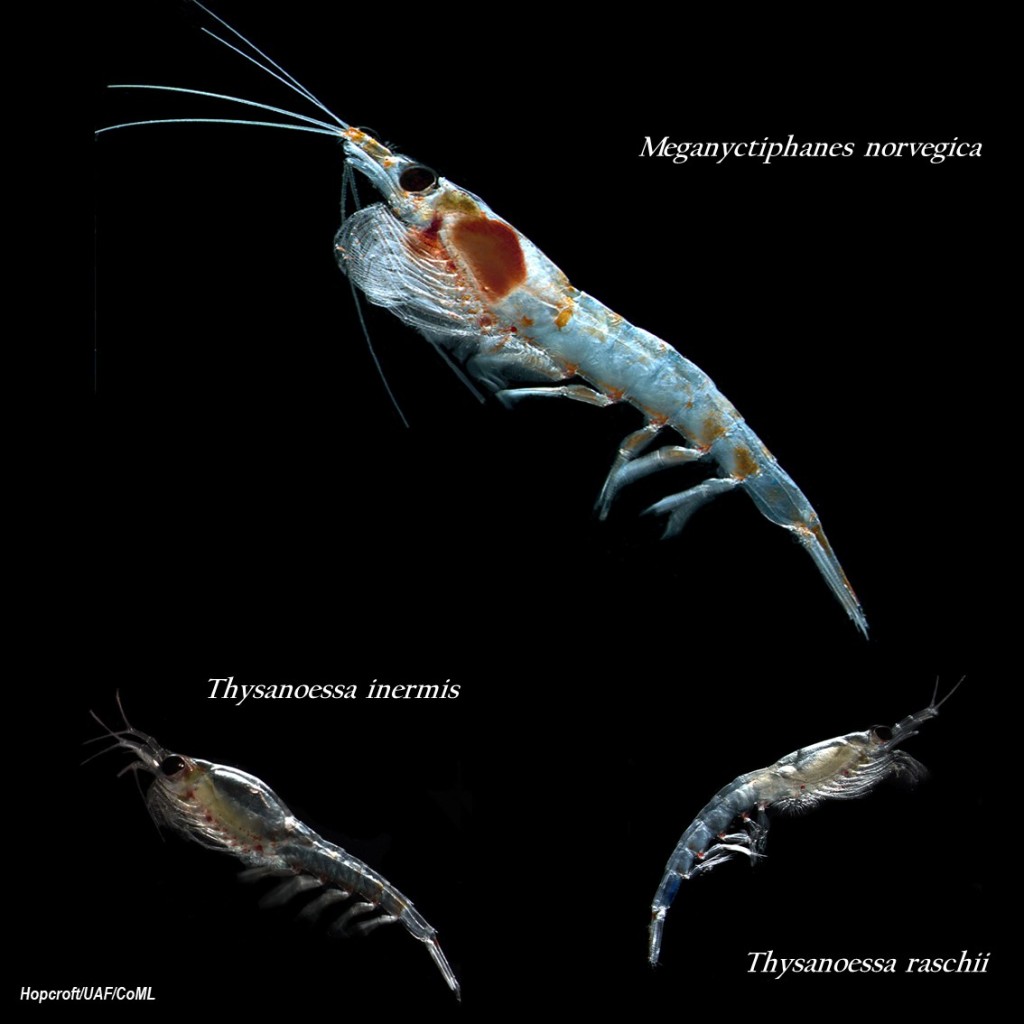L’estuaire du Saint-Laurent n’abrite pas une, mais trois espèces de krill qui se différencient par leur taille, leur comportement alimentaire.
C’est le résultat trouvé par une équipe de Québec-Océan menée par Jory Cabrol, chercheur scientifique à l’institut Maurice-Lamontagne (Pêches et Océans Canada). En observant pendant plus d’un an le comportement alimentaire du krill, il ont démontré pour la première fois la présence d’une divergence dans l’alimentation entre ces espèces. Par ailleurs, leurs travaux ont aussi mis en évidence que ces trois espèces coexistent grâce à des stratégies d’exploitation des ressources différentes leur permettant de limiter la compétition pour l’accès aux ressources alimentaires durant la période hivernale. Ces informations représentent à ce jour le portrait le plus complet disponible sur l’écologie trophique de ces espèces en Atlantique Nord.
Pour en apprendre plus :
Cabrol J, Trombetta T, Amaudrut S, Aulanier F, Sage R, Tremblay R, Nozais C, Starr M, Plourde S, Winkler G (2019). Trophic niche partitioning of dominant North‐Atlantic krill species, Meganyctiphanes norvegica, Thysanoessa inermis, and T. raschii. Limnology and Oceanography, 64(1), 165-181. https://doi.org/10.1002/lno.11027
Cabrol J., Nadalini JB, Tremblay R, Galbraith PS, Nozais C, Starr M, Plourde S, Winkler G (2020). Seasonal and large-scale spatial variability of the energy reserves and the feeding selectivity of Meganyctiphanes norvegica and Thysanoessa inermis in a Subarctic environment. Progress in Oceanography, 179, 102203. https://doi.org/10.1016/j.pocean.2019.102203

Did you know?
The St. Lawrence Estuary is not home to one but three species of krill that differ in size and feeding behaviour.
This is the result found by a Quebec-Ocean team led by Jory Cabrol, research scientist at the Maurice Lamontagne Institute (Fisheries and Oceans Canada). By observing the feeding behaviour of krill for more than a year, they have demonstrated for the first time the presence of a divergence in feeding between these species. Moreover, their work has also shown that these three species coexist because of different resource exploitation strategies that allow them to limit competition for access to food resources during the winter. This information represents to date the most complete picture available on the trophic ecology of these species in the North Atlantic.
To learn more :
Cabrol J, Trombetta T, Amaudrut S, Aulanier F, Sage R, Tremblay R, Nozais C, Starr M, Plourde S, Winkler G (2019). Trophic niche partitioning of dominant North‐Atlantic krill species, Meganyctiphanes norvegica, Thysanoessa inermis, and T. raschii. Limnology and Oceanography, 64(1), 165-181. https://doi.org/10.1002/lno.11027
Cabrol J., Nadalini JB, Tremblay R, Galbraith PS, Nozais C, Starr M, Plourde S, Winkler G (2020). Seasonal and large-scale spatial variability of the energy reserves and the feeding selectivity of Meganyctiphanes norvegica and Thysanoessa inermis in a Subarctic environment. Progress in Oceanography, 179, 102203. https://doi.org/10.1016/j.pocean.2019.102203
